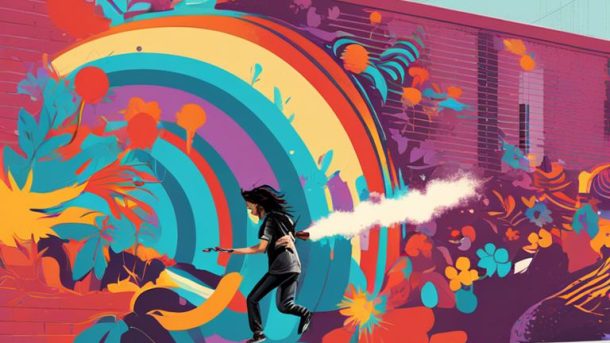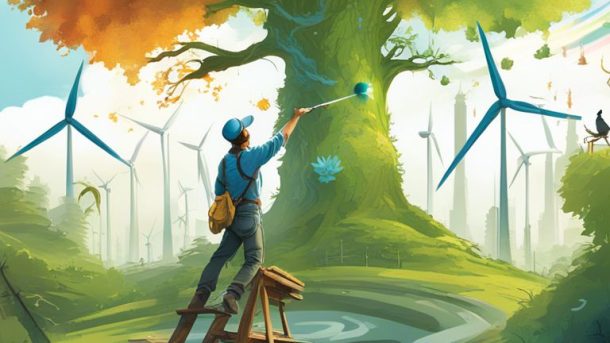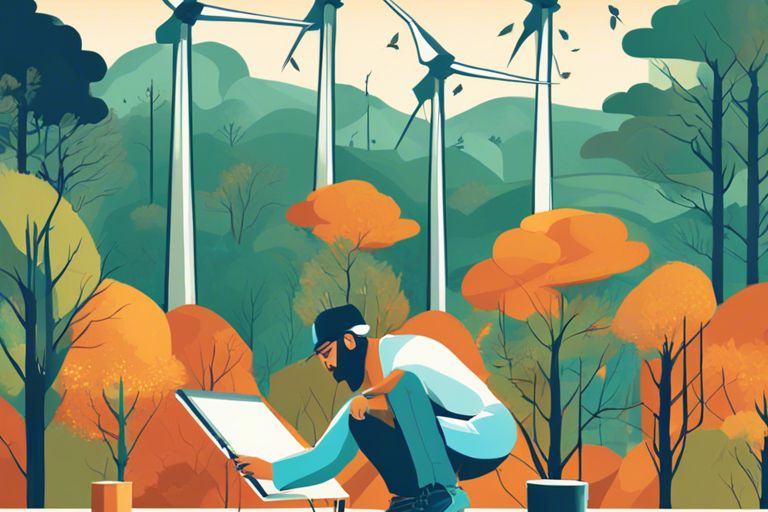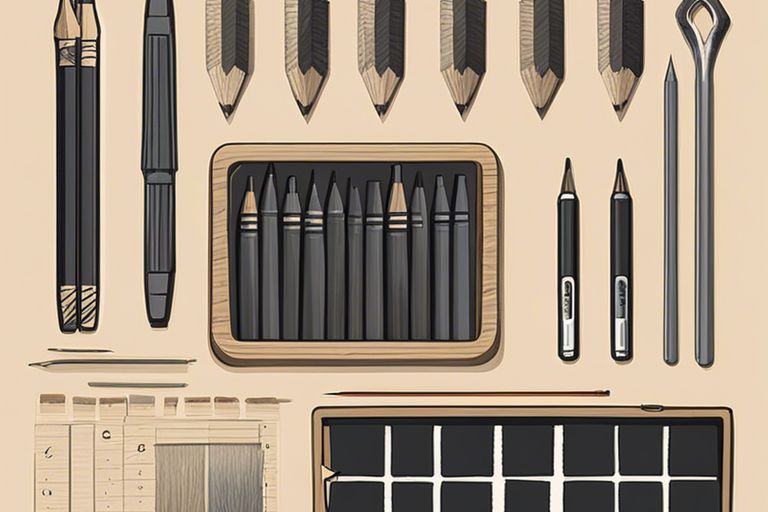Many intriguing possibilities await when you research into spray paint art to convey specific themes or messages. Whether you aim to express emotions, tell a story, or shed light on social issues, the vibrant and dynamic nature of spray paint art offers a unique canvas for your creative vision. In this blog post, you will discover tips and techniques on how to effectively incorporate symbolism, color choices, and composition to convey your desired themes or messages through the mesmerizing medium of spray paint art.
Key Takeaways:
- Choose relevant imagery: Selecting specific images or symbols that align with the themes or messages you want to convey can help communicate your ideas more effectively.
- Play with colors and techniques: Using a variety of colors, shades, and spray paint techniques can enhance the visual impact of your art and evoke emotions that support your intended theme or message.
- Add meaningful elements: Incorporating elements such as textures, shapes, or words can add layers of meaning to your spray paint art and deepen the overall message you want to convey.
The Power of Symbolism
To effectively convey specific themes or messages through spray paint art, you can harness the power of symbolism. Symbolism adds depth and complexity to your artwork, allowing viewers to interpret deeper meanings beyond the surface. By using symbols, you can evoke emotions, provoke thoughts, and create a connection with your audience.
Using Colors to Convey Emotions
Colors play a crucial role in setting the tone and evoking emotions in spray paint art. Each color carries its own unique symbolism and can convey different feelings and moods. For example, warm colors like red, orange, and yellow are often associated with energy, passion, and warmth, while cool colors like blue and green evoke calmness, serenity, and tranquility. By strategically choosing colors in your artwork, you can directly influence how viewers interpret and feel about your piece.
Symbolic Imagery in Spray Paint Art
Using symbolic imagery in your spray paint art can add layers of meaning and intrigue to your work. Symbols can be universal, like hearts for love or trees for growth, or they can be more personal and unique to your intended message. Incorporating symbols allows you to communicate abstract concepts in a visual language that resonates with viewers on a subconscious level. Whether you use animals, shapes, or objects, each symbol can enrich your artwork with deeper significance.
The incorporation of symbolic imagery in spray paint art gives you the opportunity to infuse your work with hidden meanings and narratives. These symbols serve as visual cues for viewers to unravel the story behind your artwork and connect with it on a deeper level. By carefully selecting and placing symbolic elements in your piece, you can guide the viewer’s interpretation and create a powerful visual experience.
Social Commentary through Spray Paint Art
You can use spray paint art to convey powerful messages about society and the world around us. By utilizing this medium, you have the ability to draw attention to important issues and provoke thought and discussion among viewers.
Highlighting Environmental Issues
Social commentary through spray paint art can be a potent way to raise awareness about environmental issues. You can create vibrant and striking images that depict the consequences of pollution, deforestation, or climate change. These visual representations can serve as a call to action, urging viewers to take steps towards environmental conservation and sustainability.
Addressing Social Justice Concerns
The use of spray paint art as a tool for addressing social justice concerns is a powerful form of activism. By creating thought-provoking artwork that highlights issues such as inequality, discrimination, or human rights violations, you can shine a light on systemic injustices. Your art has the potential to amplify marginalized voices and challenge the status quo.
The ability of spray paint art to engage audiences and evoke emotions makes it an impactful medium for addressing social justice concerns. Through your art, you can spark conversations, promote empathy, and inspire positive change in society.
Highlighting

Storytelling with Spray Paint
After exploring the art medium in a fusion of category and material in Exploring Art Medium: A Fusion of Category and Material in …, you can now probe the world of storytelling with spray paint art. One way to convey narratives through your art is by creating narrative scenes. By incorporating elements like landscapes, figures, and objects, you can transport your viewers to a different world and immerse them in your story.
Creating Narrative Scenes
With spray paint art, you can easily create intricate narrative scenes that evoke a range of emotions in your audience. Whether you want to tell a tale of adventure, love, or mystery, the vibrant colors and fluid movements of spray paint allow you to bring your story to life on the canvas. You can experiment with different techniques like layering, blending, and masking to add depth and detail to your scenes, making them more immersive and captivating.
Using Character Development in Spray Paint Art
Any compelling story needs well-developed characters to drive the plot forward and engage the audience. In spray paint art, you can use character development to infuse your pieces with personality and meaning. Whether you’re creating heroes, villains, or everyday people, each character you paint can convey a specific emotion or message to the viewer. Through their expressions, poses, and interactions with the environment, you can establish a connection between the audience and the story you’re telling.
Spray paint art offers a unique opportunity to experiment with character development in a visually striking way. By focusing on the details of each character, from their facial expressions to their body language, you can create a sense of depth and complexity in your artwork. You can also use colors, textures, and backgrounds to further enhance the personality and story of each character, making them truly come alive on the canvas.

Abstract Expressionism in Spray Paint Art
For artists looking to convey specific themes or messages through spray paint art, abstract expressionism is a powerful style to explore. This artistic movement emphasizes self-expression, emotion, and individual interpretation, making it perfect for conveying deep emotions and complex ideas through art.
Conveying Emotions through Texture and Pattern
To convey specific themes or messages in your spray paint art using abstract expressionism, focus on creating textures and patterns that evoke the emotions you want to express. Experiment with layering different colors, blending techniques, and varying levels of opacity to create depth and intensity in your artwork. By incorporating dynamic textures and intricate patterns, you can effectively convey a range of emotions, from tranquility and joy to turmoil and sadness.
Experimenting with Unconventional Techniques
One way to push the boundaries of abstract expressionism in your spray paint art is to experiment with unconventional techniques. Try using different materials like stencils, sponges, or even household items to create unique textures and patterns in your artwork. By exploring new techniques and materials, you can discover innovative ways to express specific themes or messages in your spray paint art.
Expressionism is not limited to traditional tools and methods; by embracing experimentation and pushing the boundaries of what is considered typical in spray paint art, you can create truly impactful and thought-provoking pieces that convey your intended themes or messages with depth and authenticity.
Pop Culture References in Spray Paint Art
Not only is spray paint art a visually stunning form of artistic expression, but it also serves as a powerful medium for conveying specific themes and messages. By incorporating pop culture references into your artwork, you can create pieces that resonate with viewers on a personal and nostalgic level.
Nostalgia and Retro Themes
On your journey to convey specific themes through spray paint art, consider tapping into nostalgia and retro themes. By incorporating iconic images and references from past decades, you can evoke powerful emotions and memories in your audience. Whether it’s a vintage movie poster, a beloved cartoon character, or a retro video game icon, these references can serve as powerful symbols that connect with viewers across generations.
Contemporary Cultural Icons and Symbols
Themes
To add depth and relevance to your spray paint art, consider integrating contemporary cultural icons and symbols into your pieces. References to current trends, popular media figures, or cultural symbols can help your artwork resonate with a modern audience. By incorporating these elements, you can create pieces that feel current and reflective of the world around us. Whether it’s a nod to a trending meme, a tribute to a popular musician, or a commentary on societal issues, these references can add layers of meaning to your artwork.
Personal Expression and Identity
Exploring Individuality through Spray Paint Art
With spray paint art, you have a unique opportunity to explore and express your individuality in a visually captivating way. Whether you choose vibrant colors, intricate designs, or abstract concepts, each piece you create reflects a part of who you are. The freedom and spontaneity of spray paint art allow you to experiment with different styles and techniques, helping you discover and showcase your true artistic identity.
Representing Cultural Heritage and Tradition
With spray paint art, you can pay homage to your cultural heritage and traditions by incorporating symbols, motifs, and colors that are significant to your background. Whether you draw inspiration from ancient art forms, folklore, or modern interpretations of tradition, each piece can serve as a visual representation of your roots and beliefs. By infusing your artwork with elements of your culture, you not only celebrate your identity but also share it with others in a powerful and engaging way.
To further enhance the representation of your cultural heritage and traditions in your spray paint art, consider researching historical references, stories, and symbolic meanings that resonate with your background. By delving deeper into the rich tapestry of your culture, you can create more nuanced and authentic artworks that speak to the essence of who you are and where you come from.
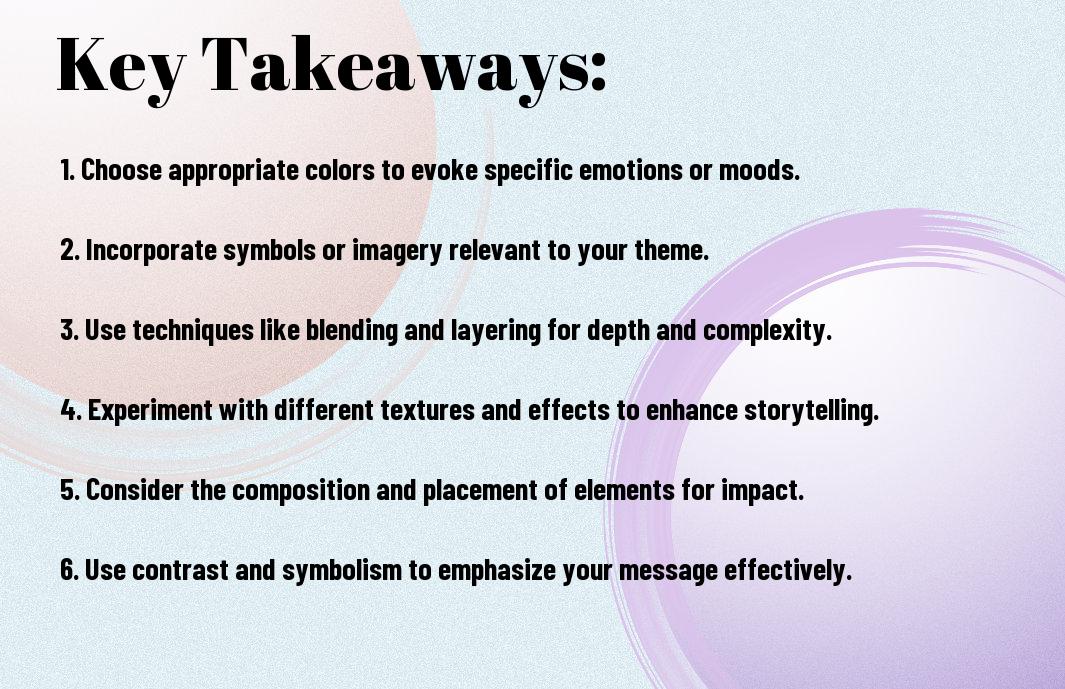
Summing up
From above, you can utilize spray paint art to convey specific themes or messages by carefully choosing colors, symbols, and techniques that align with the message you want to convey. By combining different elements such as stencils, layering, and blending techniques, you can create powerful imagery that resonates with your audience and effectively communicates your intended theme or message. Whether you want to convey a message of hope, resilience, nature, or culture, spray paint art provides a unique and impactful way to express yourself and connect with others through art.
Q: How can spray paint art be used to convey specific themes or messages?
A: Spray paint art can be used to convey specific themes or messages through the use of symbolic imagery, color choices, and composition. Artists can incorporate elements such as nature, spirituality, social issues, or emotions into their work to communicate powerful messages to viewers.
Q: What are some techniques artists use in spray paint art to convey themes or messages?
A: Some techniques artists use in spray paint art to convey themes or messages include layering colors to create depth and texture, using stencils to create intricate designs, and blending colors to evoke different emotions. Artists can also use contrast, shading, and perspective to enhance the impact of their message.
Q: Can spray paint art be used to raise awareness about important issues?
A: Yes, spray paint art can be a powerful tool for raising awareness about important issues such as environmental conservation, social justice, mental health, and more. Artists can use their artwork to provoke thought, spark conversations, and inspire action on pressing issues affecting society.
